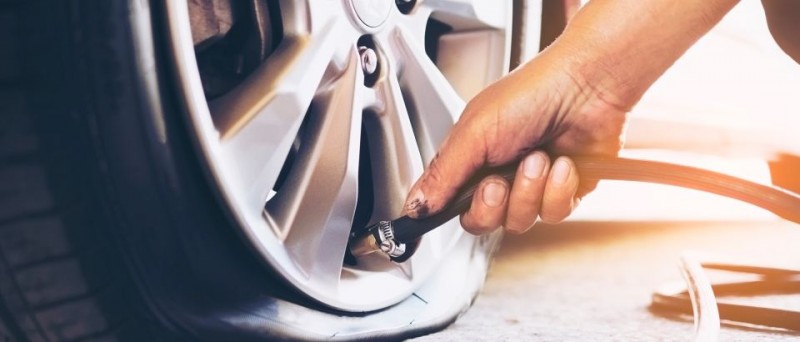
When you're on the road, the last thing you want is a tire puncture catching you off guard. Detecting a tire puncture while driving is crucial for your safety and the well-being of your vehicle. Unfortunately, many drivers make common mistakes that can lead to dangerous situations. In this guide, we will explore the best practices for identifying a tire puncture while your car is in motion and discuss the errors to avoid.
Don't Overlook Dashboard Alerts: Modern vehicles are equipped with tire pressure monitoring systems (TPMS) that can detect changes in tire pressure. Pay attention to these warnings on your dashboard. They could be an early indicator of a tire puncture.
Scheduled Tire Checks: Routine tire inspections should be part of your maintenance routine. Regularly inspect your tires for visible damage and uneven wear.
Check for Subtle Symptoms: Not all tire punctures result in immediate and dramatic deflation. Sometimes, slow leaks can be harder to detect. Be vigilant for subtle changes in your car's handling.
Use a Pressure Gauge: Invest in a quality tire pressure gauge and check your tire pressure regularly. Low pressure can be a sign of a puncture.
Listen for Unfamiliar Sounds: Unusual noises, like thumping or flapping, can be signs of a tire issue. Don't assume it's just road noise; investigate.
Stay Vigilant: Pay attention to how your vehicle handles. If it suddenly pulls to one side or feels unstable, it could be due to a punctured tire.
Distinguish Between Tire Vibrations and Other Causes: Not all vibrations are indicative of tire problems. Ensure you can differentiate between tire-related vibrations and issues with the suspension or brakes.
Temperature Affects Tire Pressure: Remember that temperature changes can impact tire pressure. Be aware of this when assessing your tires.
Use TPMS as a Backup: While TPMS is a valuable tool, it's not foolproof. Always double-check with a visual inspection.
Pull Over Safely: If you suspect a puncture, don't continue driving for an extended period. Find a safe place to pull over and inspect your tires.
Have a Spare Tire and Tools: Ensure your vehicle is equipped with a spare tire, jack, and lug wrench. These tools are essential in case of a flat tire.
Check the Spare Tire's Condition: Don't forget to inspect your spare tire periodically. It won't be of much use if it's also flat or damaged.
Learn Basic Tire Changing: Familiarize yourself with the process of changing a tire. Practice it in a safe environment so you're prepared if a puncture occurs.
Avoid DIY Repairs: If you're not experienced with tire repairs, don't attempt to fix a puncture yourself. Improper repairs can be dangerous.
Call for Assistance: If you're unsure about the extent of the damage or how to proceed, it's best to call for roadside assistance.
Reinflate Temporarily: If you've patched a puncture or used a spare tire, remember to reinflate the tire to the recommended pressure as soon as possible.
Inspect the Tire After Repair: After a professional repair, inspect the tire to ensure it's safe to drive on.
Rotate Your Tires Regularly: Regular tire rotations can help prevent uneven wear and reduce the risk of punctures.
Reduce Speed When Possible: After a puncture, reduce your speed to minimize further damage to the tire.
Regularly Service Your Vehicle: Scheduled maintenance can help identify and address tire issues before they become critical. By avoiding these common mistakes and staying vigilant on the road, you can increase your chances of detecting a tire puncture early, ensuring your safety and the longevity of your tires.
Mahindra will use Volkswagen's electric motor in these cars
Lexus LC500h: Lexus launches limited edition of LC 500h, price is Rs 2.50 crore